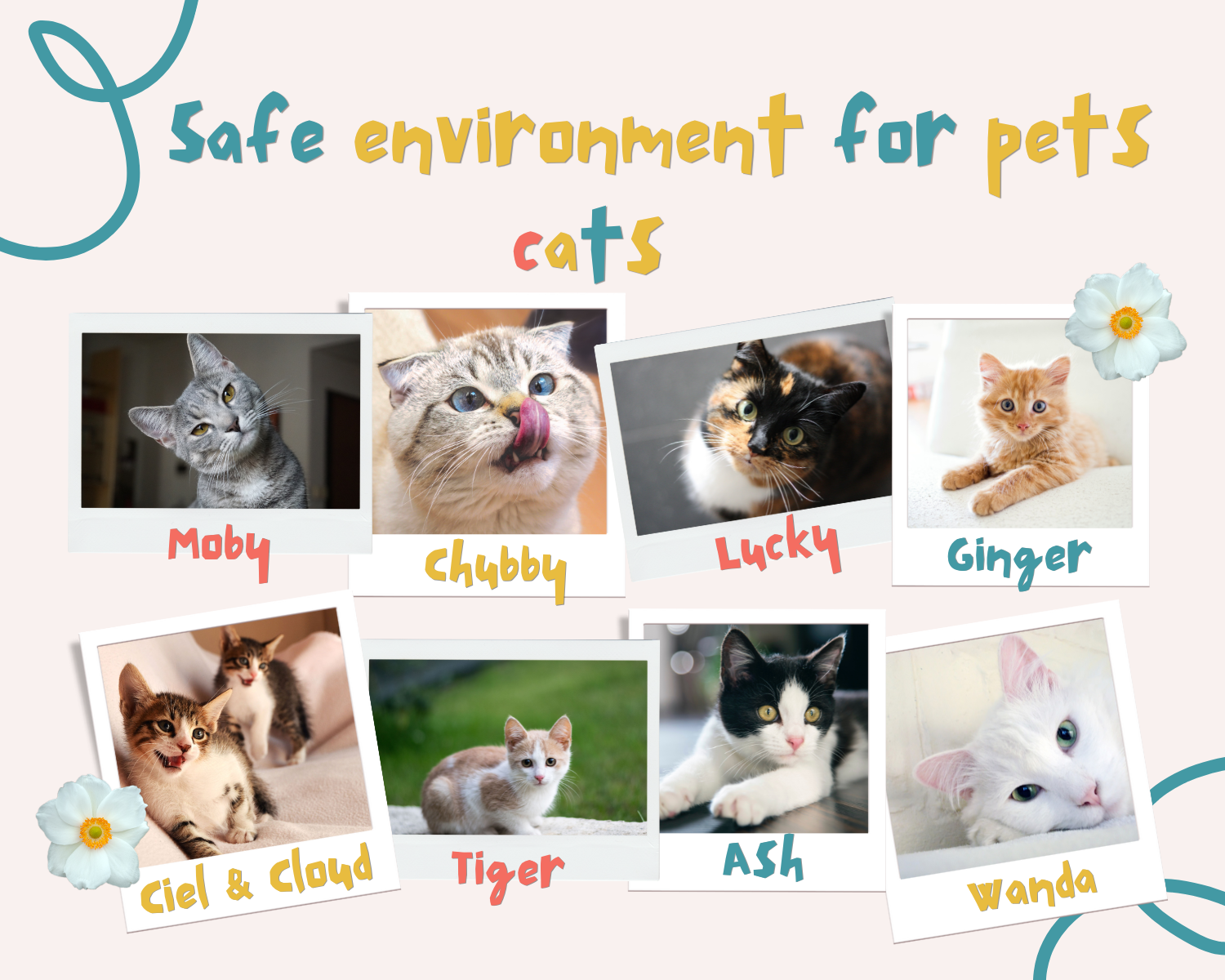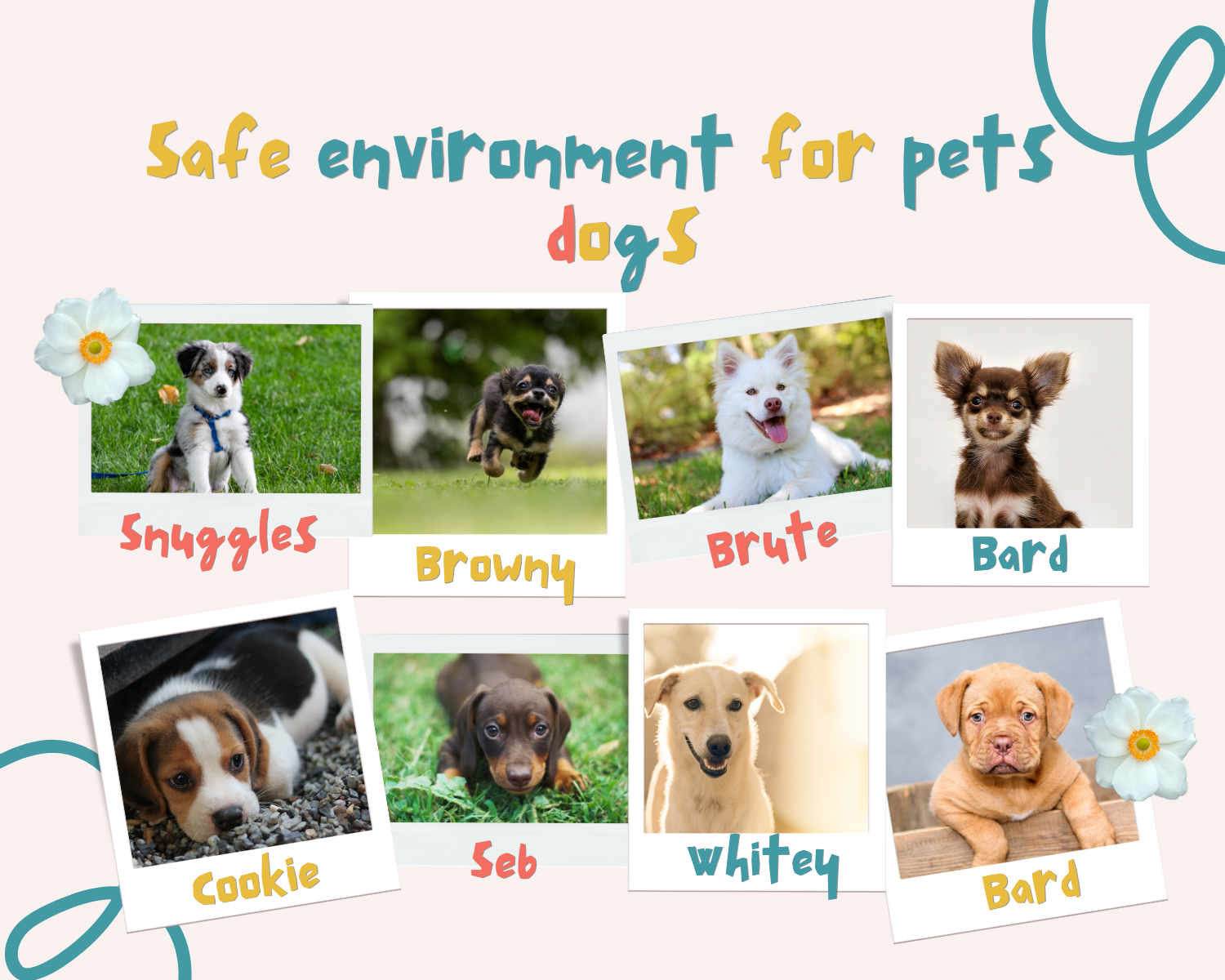Tips for Creating a Safe Environment for Cats
Cats are independent, curious creatures, but they also need a safe and secure environment to thrive. Whether your cat is an indoor cat or has access to the outdoors, ensuring their safety is a top priority. A safe environment not only protects your cat from potential dangers but also enhances their well-being, promoting a happy and healthy life. Here are some tips for creating a safe environment for your cat:
1. Cat-Proof Your Home
Cats love to explore their surroundings, so it’s essential to make sure your home is safe and cat-friendly. Look around and remove any potential hazards that could harm your feline friend.
- Hide toxic substances: Many common household items, such as cleaning products, plants, and certain foods, are toxic to cats. Keep chemicals, cleaners, and medications in secure cabinets that your cat cannot access. Be especially cautious with plants like lilies, poinsettias, and ivy, which are highly toxic to cats.
- Secure cords and wires: Cats love to chew on cords, which can be dangerous. Use cord protectors or cover electrical cords with protective tubing to keep your cat safe. Additionally, keep cords from window blinds, chargers, and other electronics out of reach.
- Lock away small objects: Small items like hair ties, rubber bands, and toys with small parts can be ingested, causing choking or internal blockages. Store these items in safe places, away from your cat’s reach.
- Check windows and balconies: If you live in an apartment or have windows that your cat can access, make sure they are securely closed, or install safety screens to prevent your cat from falling. Never leave windows or balconies open without supervision, especially if your cat is prone to jumping or climbing.
2. Provide a Stimulating Environment
Cats are naturally curious and active, so it’s important to provide an environment that keeps them mentally and physically stimulated. This helps prevent boredom, which can lead to behavioral problems or stress.
- Offer vertical spaces: Cats love climbing and perching in high places. Invest in a cat tree, shelves, or window perches that allow your cat to safely climb and explore. Vertical spaces also provide them with a sense of security, as they can observe their surroundings from a safe vantage point.
- Interactive toys: Provide a variety of toys to keep your cat entertained, such as puzzle feeders, interactive wands, and laser pointers. Rotate the toys regularly to keep things fresh and exciting for your cat.
- Scratching posts: Scratching is a natural and important behavior for cats. It helps them stretch their muscles, mark their territory, and keep their claws healthy. Place scratching posts in various areas of your home to encourage this behavior in safe, appropriate places.
3. Create a Safe Outdoor Space (If Applicable)
If you allow your cat to spend time outdoors, it’s crucial to create a safe and secure outdoor space to minimize risks.
- Enclosed outdoor area (catio): A “catio” is an outdoor enclosure that allows your cat to experience nature while being protected from potential dangers like traffic, predators, or aggressive animals. If possible, create or buy a secure outdoor space for your cat to explore safely.
- Leash training: For more controlled outdoor excursions, you can train your cat to walk on a leash. Start with a comfortable harness and slowly introduce your cat to the idea of walking outside. Leash training allows them to enjoy the outdoors without the risks associated with free-roaming.
- Supervision: If your cat prefers to be outside without a catio, always supervise them when they’re outside. This ensures they don’t wander into traffic or encounter dangers such as aggressive animals or toxic plants.
4. Provide a Safe, Quiet Space Indoors
Cats are creatures of habit and enjoy having a safe, quiet retreat where they can rest and relax away from noise or disturbances.
- Create a cozy hideaway: Set up a designated resting space where your cat can escape to when they need some quiet time. This could be a soft bed, a quiet room, or even a cardboard box. Make sure this space is free from loud noises, children, or other pets that may stress them out.
- Calming products: If your cat is anxious, consider using calming products like pheromone diffusers, sprays, or calming collars. These products can help reduce stress and anxiety by releasing calming scents that mimic the natural pheromones of cats.
5. Ensure Proper Identification and Tracking
If your cat spends time outdoors, it’s crucial to have a form of identification in case they get lost.
- Collars with ID tags: Make sure your cat wears a collar with a clear ID tag that includes their name and your contact information. Opt for a breakaway collar that will safely release if it gets caught on something.
- Microchipping: In addition to a collar and ID tag, microchipping provides a permanent form of identification. If your cat is lost and brought to a vet or shelter, they can be scanned for a microchip and reunited with you.
- GPS trackers: For more peace of mind, consider using a GPS tracker specifically designed for cats. These devices attach to your cat’s collar and allow you to track their location in real-time via an app, which is especially helpful if your cat tends to roam outside.
6. Regular Veterinary Care
A key part of creating a safe environment for your cat is ensuring their health and well-being are prioritized.
- Routine check-ups: Schedule regular veterinary visits for wellness check-ups, vaccinations, and parasite prevention. Regular vet visits can help catch any potential health issues early, keeping your cat safe from illness and disease.
- Spaying/Neutering: Ensure that your cat is spayed or neutered. This helps prevent unwanted pregnancies, reduces the risk of certain cancers, and can prevent some behavioral issues.
- Flea, tick, and parasite prevention: Use flea and tick preventatives to protect your cat from parasites that can cause discomfort or transmit diseases. Consult your vet for the best options based on your cat’s needs.
7. Pet-Proof Your Yard and Garden
If your cat has access to a garden or backyard, take steps to make sure the area is cat-friendly and safe.
- Remove toxic plants: Many plants found in gardens are toxic to cats. Common examples include lilies, daffodils, and aloe vera. Check your garden and remove any plants that could be harmful to your cat.
- Secure fences: If your cat has access to a garden or yard, ensure that the fence is high enough and free from gaps. Cats can be excellent climbers and may attempt to escape if the fence isn’t secure.


